
9 Email List Cleaning Best Practices for 2025 [+8 Services]
So you followed all the steps to build and nurture your list. You created a beautiful landing page and your forms asked for details that were just right. But after a campaign or two, your engagement rates started to decline, and you began receiving more soft and hard bounces than you expected.
If this scenario sounds familiar, maybe it’s time for some email list cleaning.
Below, we’re going to take a more detailed look at:
- The reasons you need to keep your lists clean
- Some best practices to make it happen
- A few tools to get started
Now let’s get into more detail.
More Opens. More Clicks. Less Spam.
Clean your list with Moosend’s preference center and ready-to-use automations.
Start FreeWhat Is Email List Cleaning?
Email list cleaning—also called email scrubbing—is the process of removing invalid or outdated emails, spam accounts, and disengaged contacts from your email lists lists. The goal is to increase your email opents, engagement rates, improve sender reputation and deliverability, and boost your return on investment.
Email list cleaning includes verifying whether an email address is correctly written, checking for domain and mailbox validity, identifying spam traps, and removing non-responsive subscribers. Keeping only valid and responsive email addresses ensures your campaigns reach recipients who are likely to engage.
While most email marketing services offer list-cleaning tools, standalone solutions are also available to support comprehensive list maintenance.
Why Should I Clean My Email List?
As mentioned above, a clean email list can boost your core metrics, your ROI, and your email deliverability rate, as emails will go straight to the inboxes of recipients who are genuinely interested.
Cleaning your email list is also beneficial for the following reasons:
- It can lower costs. Many ESPs charge by number of contacts. Keeping invalid or outdated contacts in your database will increase costs and lead to an inflated marketing budget.
- You will get more accurate reports. A clean email list provides better data, meaning that you can make more accurate decisions in the future.
- Segmentation gets more effective. You can group up your contacts better and create granular segmentation strategies when your data accurately reflects your audience’s interests.
- You’re compliant with data protection laws. Laws like GDPR or the CAN-SPAM Act ensure data are consentually given. Removing non-compliant email ensures your compliance with this guideline.
- You can create more effective email segmentation when your data accurately reflects a genuinely interested audience.
But how do your email lists get “dirty” in the first place? A common reason is human error, followed by duplicate or disposable emails, invalid email addresses, spam accounts, and inactive subscribers.
Removing email addresses that are not useful will only leave valid addresses and engaged users behind, which will help you achieve high conversion rates. Neglecting to perform regular email cleaning will eventually:
- Harm your email sender reputation, which is the score assigned to you by Internet Service Providers (ISPs)
- Result in multiple email bounces
- Negatively impact your lead generation efforts
- Lead to an increased number of spam complaints that will harm your deliverability
- Give you a high bounce rate and unsubscribes
- Cause email providers (Outlook, Gmail, Yahoo, etc.) to automatically send your emails to the spam folder
If you notice any of the above, it’s time to perform an email list purge.
Below, you’ll find some of the best ways to nail email scrubbing in simple steps.
1. Plan your list-cleaning process
As your list grows, you need to perform frequent checks to ensure that it is free of bad email addresses. So, how often do you need to clean your email list?
Depending on your email list growth rate, performing an email scrub every two months is an excellent way to keep your contacts in order. Of course, you should always check your metrics (i.e. open rates, bounces) to determine whether you need to run an emergency email scrub or make it more frequent.
Planning your process is the best way to start. So here’s what you need to do:
- Set up a consistent list cleaning schedule
- Assign dedicated people to perform the task
- Have the tools and resources you need to do it
A successful email list cleaning process needs to rely on frequency and consistency. Creating a list scrubbing calendar is perfect for reminding you and your team when you need to reorganize your contacts. So make sure to craft one and incorporate it into your email marketing calendar.
2. Use double opt-in
Identifying and removing “bad email addresses” from your list can be a tedious task. But what if you can minimize the number of invalid or duplicate contacts right from the start by using double opt-in?
Setting up a double opt-in process is the easiest way to nail email validation without using additional tools. All you have to do is prompt your new subscribers to confirm their email address as Merc Clothing does:
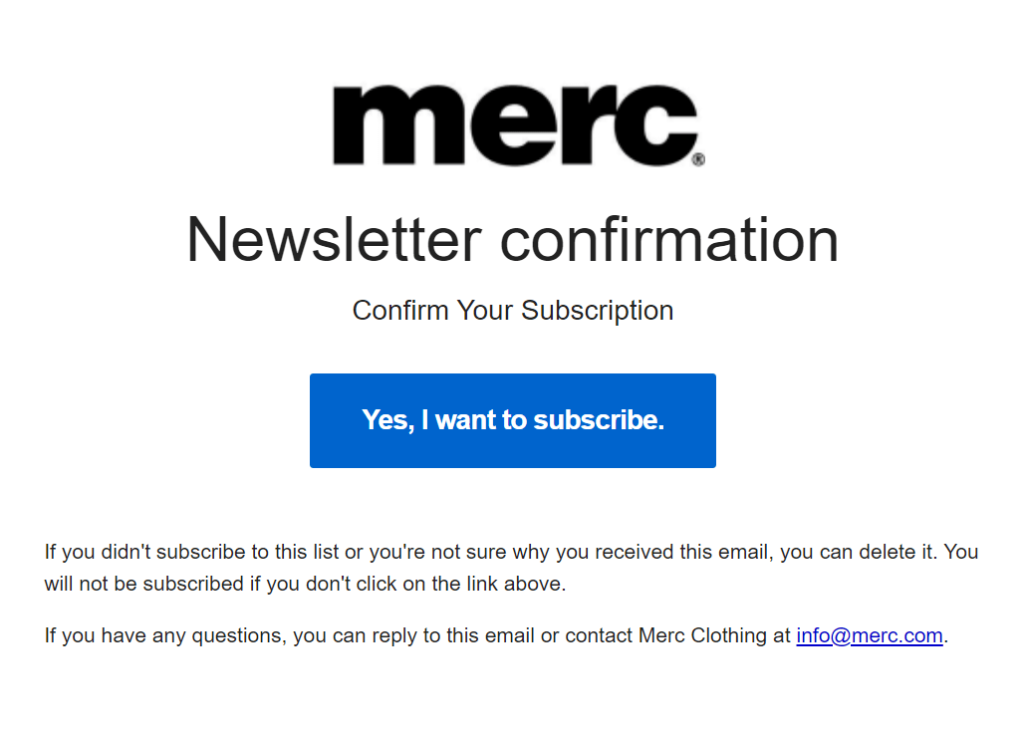
This extra step is necessary to avoid adding unconfirmed or spam email addresses to your contact list. Sadly, a large number of businesses aren’t using double opt-in, especially in the US, where the GDPR law isn’t in effect.
While double opt-in adds an extra step to the process, using it will minimize the number of “bad emails” ending up in your list, making it your first step to creating an effective list building process that will save you time and resources.
3. Set criteria for disengaged subscribers
How do you define a disengaged subscriber? To do so, you need to define what “disengaged” means.
A recipient who interacts with 70% of your email marketing campaigns is interested enough to engage with you. On the other hand, someone who only opens 20% of your messages may show little to no interest in your business.
Establishing specific criteria to spot your low-engagement subscribers is the first step to performing a successful email list cleaning.
So when you find them, you can:
- Start removing duplicate email addresses from the list
- Clear out subscribers who marked you as spam to avoid having your deliverability rates harmed by spam filters
- Find and separate your soft from your hard bounces
Accurately identifying your disengaged audience will help you perform more effective email scrubs. Also, the above process will allow you to filter your contacts, discover patterns and then create the perfect strategy to power up your email list hygiene.
4. Improve your segments
Audience segmentation is the most effective way to send targeted content to your audience and impact their engagement and your deliverability rates. Beyond demographic segmentation, or segmentation by location, your segments can be based off recipients’ email behavior.
For example, grouping non-openers allows you to retarget them with adjusted messaging and test the type of content they find engaging. This will show you whether your overall engagement strategy improves.
Segmenting your contacts to discover bounced emails is equally important: hard bounces indicate invalid email addresses that should be removed immediately to maintain sender reputation and high deliverability rates. On the other hand, soft bounces might be a result of temporary issues (a full inbox, or server downtime) and they can be re-tested with a follow-up send.
Consistently reviewing and updating segments ensures that campaigns reach real recipients and helps preserve list quality while improving overall email performance.
5. Target your audience with re-engagement campaigns
Removing non-openers and disengaged users might be quite straightforward, but it won’t generate results on its own. If you want to build an effective list, you need to establish relationships with your audience.
When it comes to audience disengagement, reasons may vary. Lack of engaging content is one of the first things that comes to mind. Your subscribers could also feel overwhelmed, frustrated, or disengaged—in other words, they could be experiencing email fatigue—so you can’t be sure why they didn’t open your recent campaigns.
The best way to get recipients interested in your business is to target them with smart re-engagement emails. Here’s an example by Levi’s:
Subject line: Just for you… because it’s been a while.
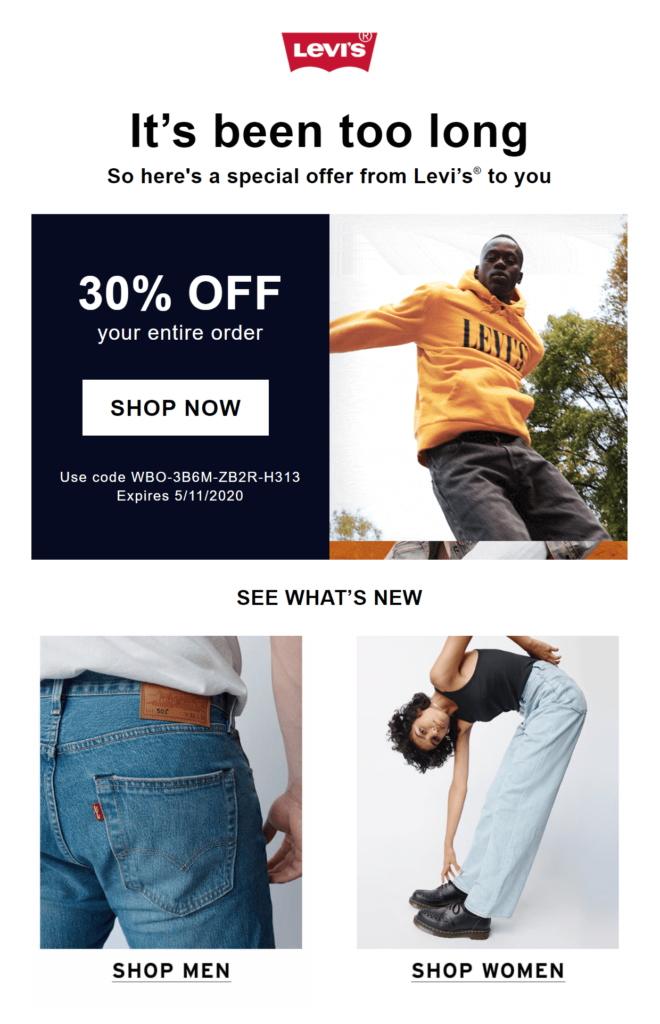
Your re-engagement campaigns need to have the right incentive to get your subscribers to act. For instance, you can deliver special discounts and exclusive deals like the above example or create unique content to nurture them anew.
Apart from giving them an irresistible offer, you can give your email subscribers the opportunity to choose the number of emails they want to receive from you or the type of messages they prefer. This way, you will improve your segments and the health of your list.
6. Use the unsubscribe button to your advantage
One of the most essential elements of a newsletter campaign is your unsubscribe button. This link, usually found in the email footer, allows your interested contacts to remove themselves from your list easily. Check out this example by Captions:
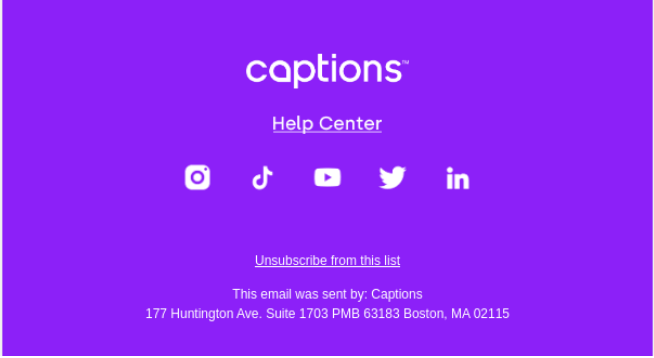
Making “unsubscribe” clear and visible will help you power up your list cleaning efforts and give disengaged subscribers a quick way out. While most email marketers add unsubscribe links in the footer, you can also place them above the fold to make them more visible, and make the process faster.
Giving uninterested recipients a way out is one of the simplest ways to keep your email list clean. Also, don’t forget that hiding the unsubscribe link will trigger spam complaints. So being transparent and letting your unengaged contacts go is preferable to getting flagged as a spammer or ending up on a blacklist.
7. Keep your lists clean with marketing automation
Most email service providers (ESPs) offer marketing automation options that will help you create triggered workflows. Such workflows have a user action as their starting point (or “trigger”), making your email sends more relevant and helping you target your audience with the right message at the right time.
Automation can also support engagement-based segmentation. Workflows can be set up with the objective of isolating non-openers or low-engagement subscribers. At the same time, lead scoring models can classify contacts according to activity levels. This will make it easier to identify high-value and inactive users. Maintaining this type of automated structure ensures that lists remain accurate and optimized for deliverability and performance.

To get started, you will need a platform with advanced automation capabilities, like Moosend and Mailchimp. Make sure you go for an affordable email tool that can provide automations, workflow builders, and rule-based triggers that enable ongoing list maintenance and performance monitoring without manual oversight.
If you want to give it a try, sign up for a Moosend account and hop into the visual editor to see how it works.
8. Use a dedicated email list cleaning tool
All of the above steps focus on the manual aspect of email list cleaning. But what if you need to streamline your list’s maintenance?
In this case, you can use a list cleaning tool to make the process easier, especially if you have a neglected email list, or one that is on the larger side. Email validation services like EmailListVerify and Neverbounce have developed a set of tools designed to improve deliverability, prevent spam hits, and maintain list hygiene.
In brief, most email scrubbing services offer:
- Real-time email verification
- Bulk email list verifiers
- Disposable email checkers
- Integrations with popular ESPs
Of course, using a dedicated email verification tool shouldn’t be seen as the end-all-be-all. Rather, it’s an optional aid, not a solution to engagement problems. At the end of the day, an email list cleaning service is there to enable accurate, efficient cleaning, not tell you the reason behind your subscribers’ disengagement.
Understanding subscriber behavior and applying those insights is still a marketer’s responsibility and is essential for refining the email marketing strategy as a whole.
9. Create a preference center
An email preference center is a function that some email marketers overlook. However, it’s a core practice of keeping a clean email list. As its name suggests, an email preference center is a page or tool that’s designed to help subscribers manage the communications they want to receive.
Having an email preference center enables recipients to customize the type of content they’d like to see from you, set email frequency, or even unsubscribe from specific types of email newsletters.
This practice has some obvious benefits for subscribers (they can personalize their experience and build a more meaningful connection with your brand). But what are the email list cleaning benefits?
- Better segmentation: When recipients set their preferences, they place themselves into the segment that truly intersts them, and help you create targeted content.
- Reduced unsubscribe rate: Since recipients can adjust their experience and receive emails from you as frequently as they want, they’re more likely to remain subscribers.
- Reduced spam complaing rate: Recipients who set their preferences are bound to be interested and remember your brand and your content. This will eliminate the chance of them not remembering ever signing up and, eventually, flagging your emails as spam.
Since remaining subscribers will be those interested and ready to interact with your brand in some way, there are some hidden benefits as well, like better open and click-thourgh rates. But the most important thing here is that, by setting a preference center, you’re turning your audience into an active part of your email strategy.
8 Best Email List Cleaning Services To Get Started
Below, you’ll find some dedicated tools to make your list cleaning efforts easier and uncomplicated. Let’s check them out.
1. Bouncer

Bouncer is a comprehensive email list cleaning service that helps you remove invalid, inactive, and temporary email addresses from your lists. With features like domain and SMTP validation, it ensures your emails reach real recipients, improving your campaign’s deliverability and ROI. The platform includes a spam trap checker to protect your sender reputation and a syntax error validator that provides real-time corrections via API.
Bouncer also offers a disposable email cleaner and MX record validator to enhance list accuracy. Users benefit from GDPR compliance and data security, with data centers located in the EU. Bouncer’s service is user-friendly, allowing you to drag and drop your email list for efficient verification.
Pricing: Start with 100 free credits to experience Bouncer’s precise and reliable email verification. Paid plans start from $8 for up to 1,000 verifications (pay-as-you-go plan) or $50/month for 10K verifications (monthly plan).
2. EmailListVerify

EmailListVerify is a full-fledged email verification service to help you detect spam traps, hard bounces, and improve the ROI of your email marketing campaigns. The platform offers an array of features, such as domain and SMTP validation to purge your list of invalid or inactive domains and remove incorrect email addresses.
On top of that, you have at your disposal a spam trap checker to improve your sender reputation score and a syntax error validator that notifies your website visitors in real-time through API. Among others, you can benefit from the disposable email cleaner and MX record validator to get rid of temporary email addresses and validate your email server records.
Pricing: EmailListVerify offers pay-as-you-go and monthly plans that are credit-based. You can start with 100 free verifications, to test the tool’s capabilities. The lowest tier starts at $16/month for 5,000 credits, while the lowest pay-as-you-go option is 1,000 credits for $5.
3. Neverbounce
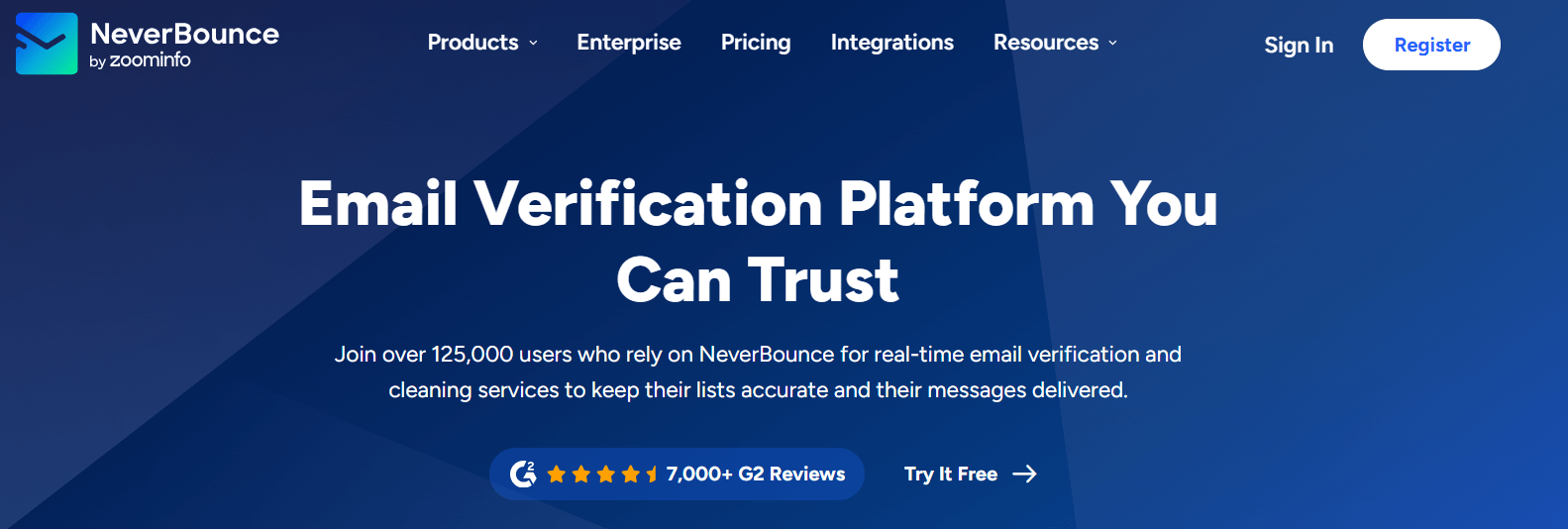
Neverbounce is another email cleaning service you can use to analyze your mailing lists. More specifically, the platform offers three main features. With Clean, you can upload your lists to verify your contacts and have your list cleaned on the spot. Also, you can leverage the bulk email list cleaning option to improve your sender reputation and increase your inbox placement.
With Verify you can benefit from real-time email verification to target your subscribers when they join your list. This means that you can connect your lead gen pages , signup forms, or CRM with the tool to prevent “bad email addresses” from entering your list. Lastly, you can use Sync to automate your list cleaning by connecting Neverbounce with your email provider.
Pricing: You can try the tool for free or book a demo. Then, paid plans start at $8/month for up to 1,000 credits, if you go for one of the basic plans. There is also the option of Sync plans, which promise to ‘”clean your data on a daily basis.” Its prices start at $10 for 1,000 emails.
4. ZeroBounce

Zerobounce promises to help you improve your open rates and increase your efficiency with a fast and secure tool. The platform is equipped with a range of features to clean your email list and reach your audience. More specifically, you can use the email validator to detect bounces, spam traps, bots, and easily remove them from your list.
What’s more, Zerobounce sports an Activity Data tool to help you improve your email metrics and revenue. This addition will help you collect insights about your subscribers and improve your customer engagement long-term. Apart from email validation, the platform offers an email testing tool to check whether your messages will reach the inbox before pressing the send button.
Pricing: You can test the tool by signing up for the free plan for 100 validations/month. For more, paid plans start at $99/month for 25,000 emails. And since one credit equals one action, there is also a pay-as-you-go plan that starts at $20 for 2,000 credits.
5. QuickEmailVerification

QuickEmailVerification is a simple software solution to power up your email scrubbing efforts. This email verifier offers bulk email validation tools for email marketers, as well as an email validation API for developers. Using the tool is very easy as it has a drag-and-drop function, allowing you to add your lists to your account and start the verification process.
What’s more, the service is perfect for enterprises as it is designed to process a large number of emails at once. Reporting is essential for your list cleaning, and QuickEmailVerficiation will let you generate reports with detailed metrics to optimize your list management.
Pricing: The email list cleaning service has a freemium plan for small businesses and startups that covers 3,000 credits/month and 100 email addresses/day. For premium features, you will need a paid plan starting at $25/month for 500 credits/day. You can also pick the Persistent Credits option that starts at $4 for 500 credits total.
6. VerifyBee
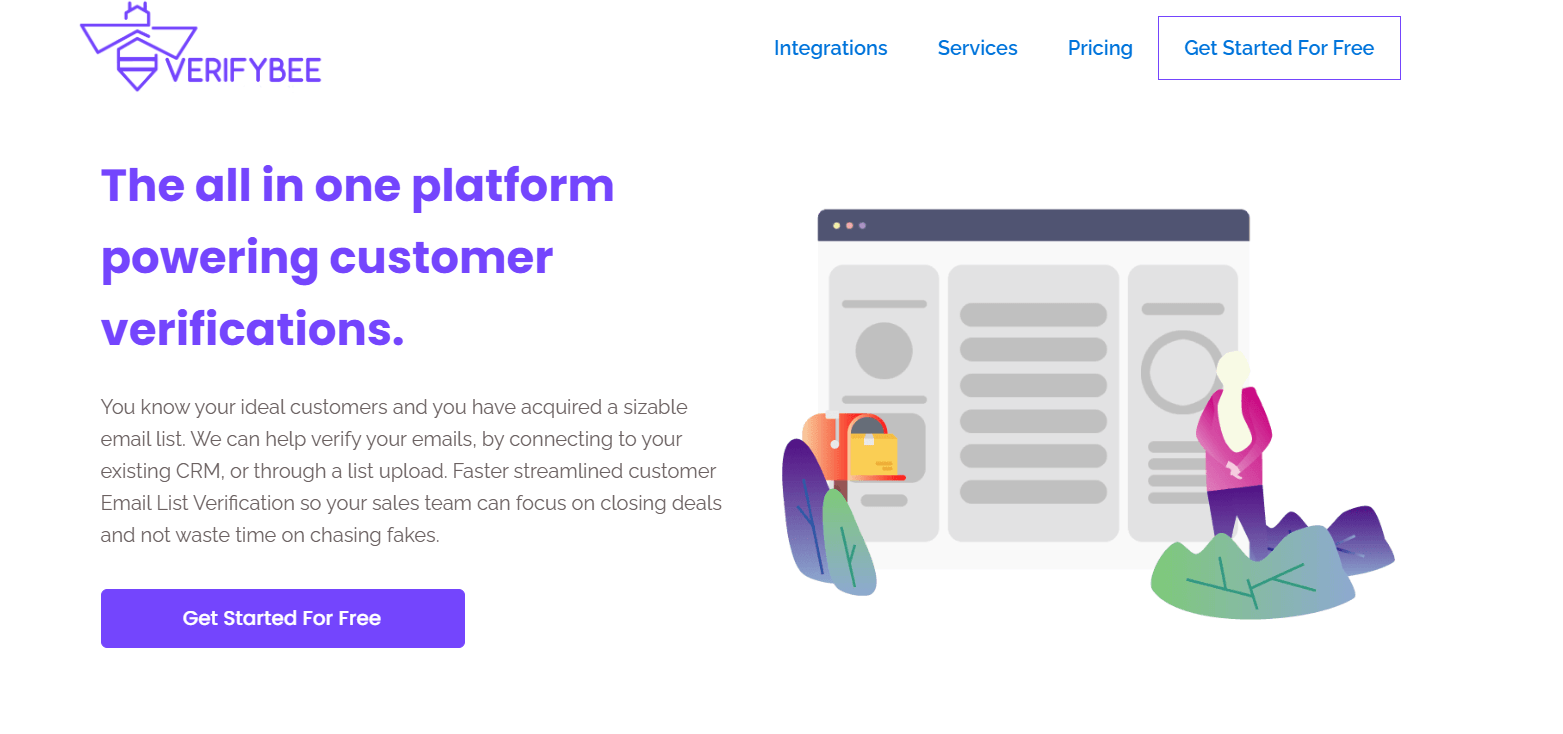
VerifyBee is an all-in-one platform that simplifies email list verification. You can start the process instantly by copying and pasting your contacts. Then, the tool will find duplicate emails, typos, and syntax errors and perform an MX record check for better accuracy.
Apart from verifying your subscribers’ email addresses, you can integrate the software with your CRM and verify phone numbers. Overall, VerifyBee is a great tool to check your domain validity, CatchAll address, spam traps, as well as ping email servers for server validity.
Pricing: The software offers a free trial you can use to try it out. After that, you need to upgrade to a paid subscription, starting at $19/month for 2,500 verifications/month.
7. Email List Validation
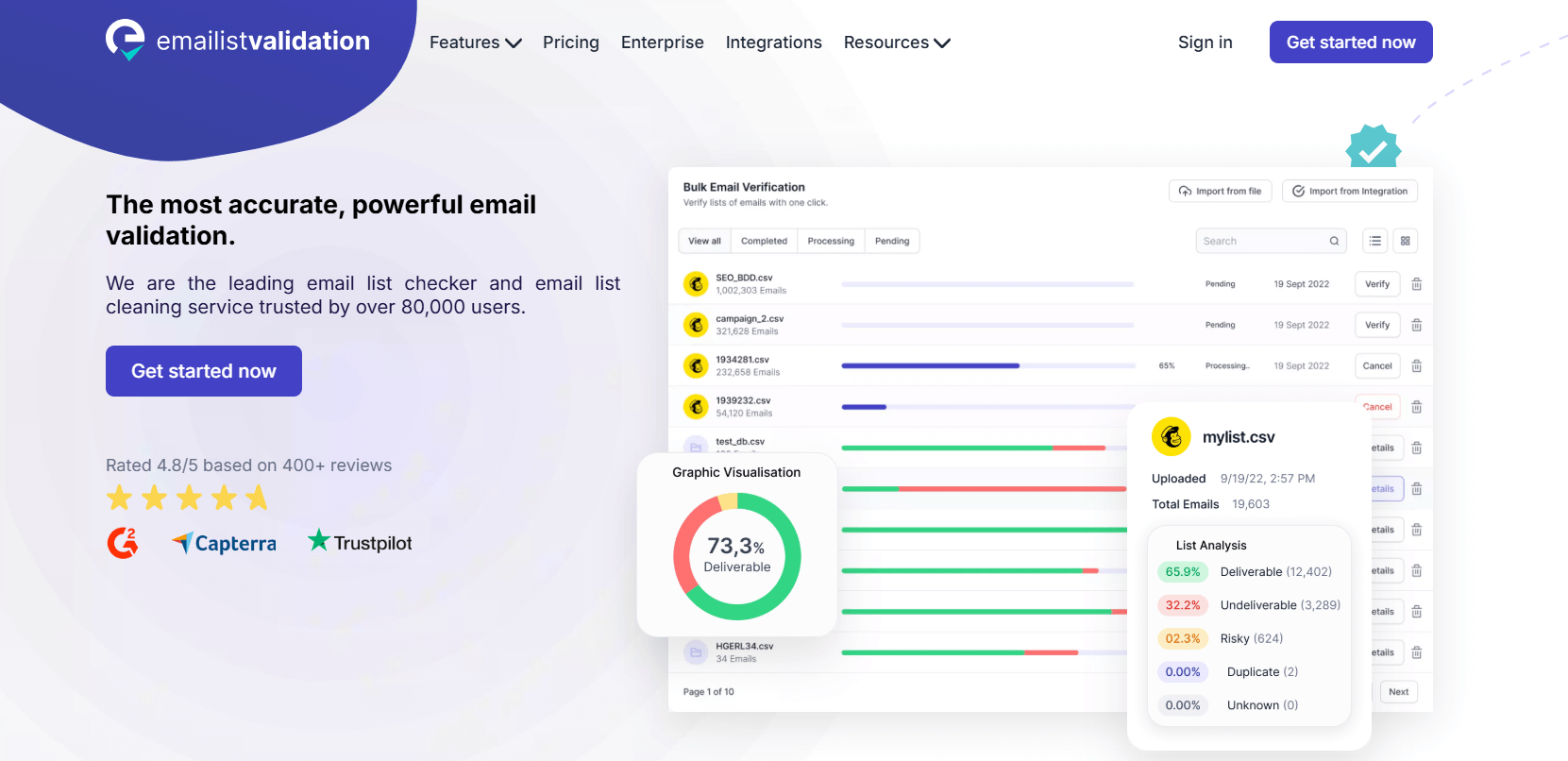
Email List Validation is a cutting-edge email list cleaning service that allows you to check your email list in bulk, detects invalid addresses, temporary emails, duplicate emails, and spam traps and also removes hard-bounced emails. Moreover, it verifies syntax errors in just minutes with a verification process.
The tool boasts a 99% accuracy, while it can process up to 5 million emails. Its functionality also includes domain validation. Finally, this software can be integrated with popular ESPs, CRMs and other marketing tools to make your life easier.
Pricing: The service gives you the option to get started for free. Paid plans start at $19/month for 2,500 emails, while the more verifications you buy, the less you pay per verification.
8. Clearout
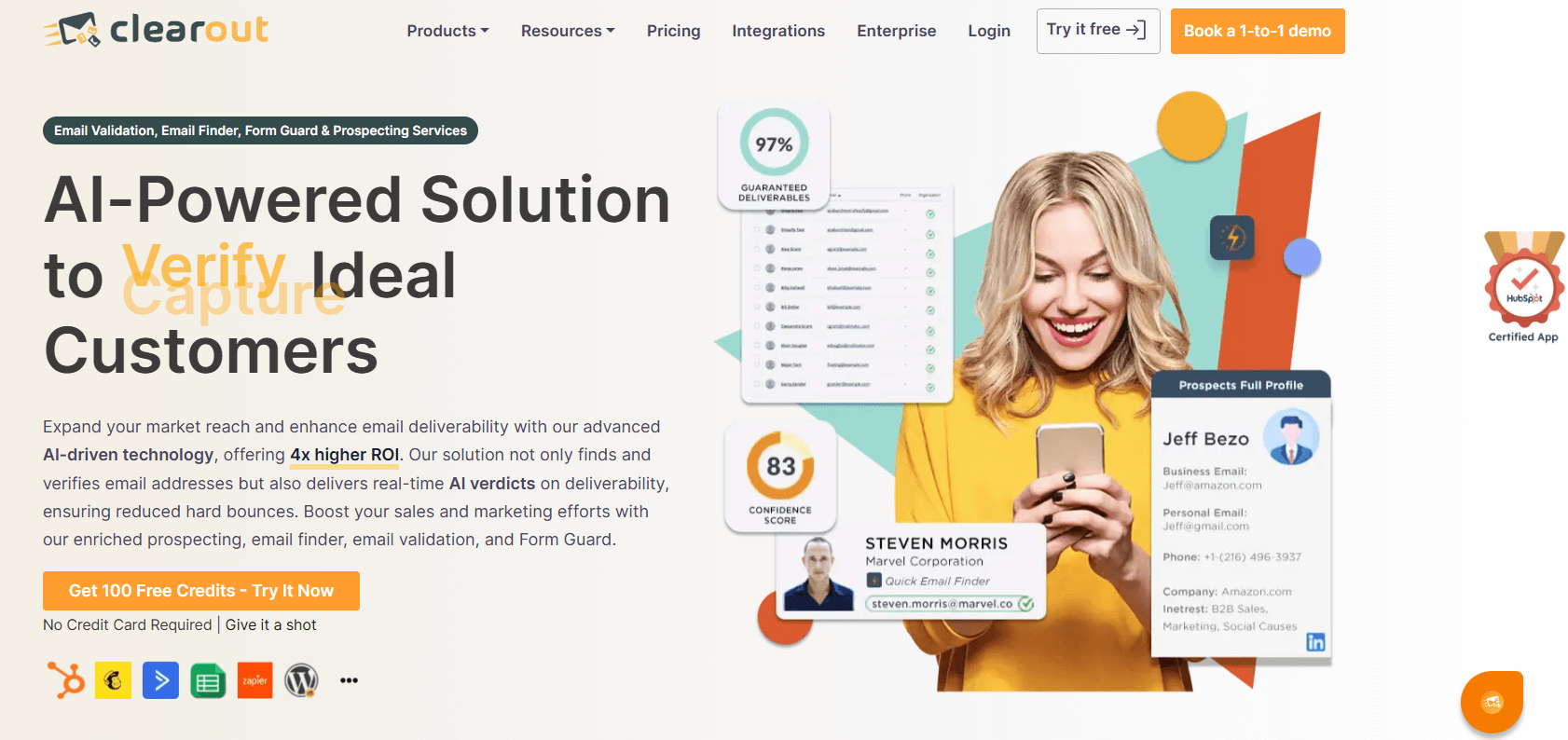
Clearout is an AI-powered bulk email list cleaning service that helps to reduce bounce rates and improve email deliverability. As a GDPR-compliant tool, it ensures 99% accuracy in email verification. Clearout performs 20+ comprehensive validation checks, including greylisting verification, syntax validation, spam trap detection, disposable email detection, and more. One standout feature is its advanced catchall resolver which identifies the actual status of catchall email addresses. Clearout’s “Guaranteed Deliverables” is a super status that helps ensure a low bounce rate of less than 3% to protect the sender’s reputation for the users facing deliverability issues.
The service also offers instant and bulk verification APIs compatible with all major programming languages and integrates with popular CRMs, ESP platforms, and forms. Finally, it has an allowlist-blocklist feature that enables users to control signups by allowing or blocking specific email addresses or domains preventing unwanted entries into the list.
Pricing: The service provides a freemiup plan with 100 free credits upon signing up. Paid plans include monthly and annual subscriptions as well as pay-as-you-go options. The Starter plan starts at $18/month for 3000 credits/month.
How To Clean Your Email List With Moosend
Cleaning your lists without the help of external tools is possible through marketing automation. As mentioned above, you can create workflows based on user engagement and actions to unsubscribe inactive contact automatically.
Below, we’ll see how you can leverage Moosend’s easy-to-use tools to create a simple workflow and perform an efficient email scrub.
Email list cleaning through segmentation
Moosend’s platform sports advanced segmentation features and a visual workflow builder to create automations that make sense for your list cleaning efforts, power up your sales and keep your audience engaged.
In our case, we selected to create segments specifically for non-openers, as you can see in the example below:

This segment allowed us to find disengaged subscribers by setting rules like “Opened Any Campaign.” If you choose to create the same workflow, keep in mind you can export your new “bad email list” and unsubscribe or re-engage your contacts.
What’s more, Moosend gives you the option to remove inactive contacts, archive list members, delete them or copy them from other lists through the Bulk Actions option.
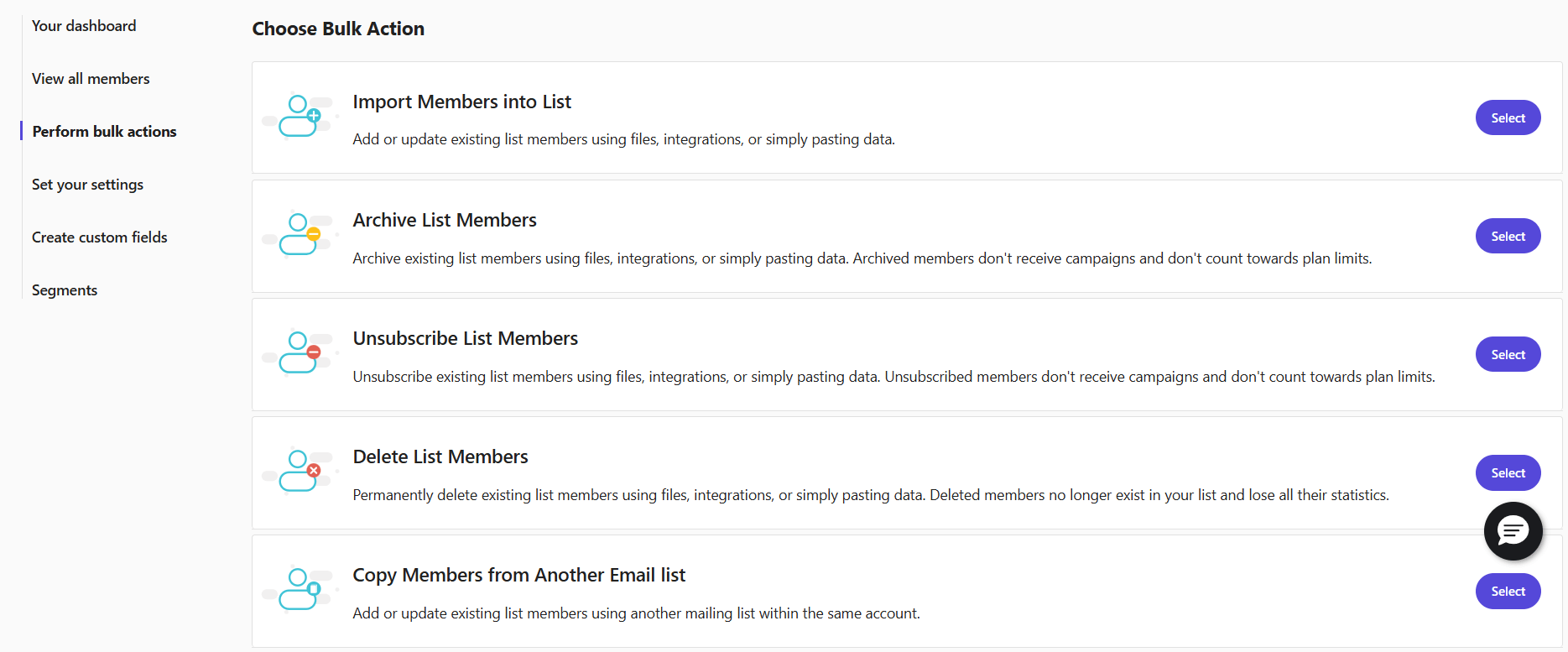
Email scrubbing through marketing automation
Apart from cleaning your list through the audience management system, you can leverage Moosend’s advanced marketing automation capabilities to streamline the process. Let’s see how.
We created custom sequences that will unsubscribe specific contacts based on their behavior. To do so, we started the flow with the “When some people don’t open my campaigns” trigger:

After setting a specific timeframe, we chose the action we want our automation to perform; in this case, unsubscribing the disengaged subscribers from the email list we wanted to clean:

If you choose to follow the above steps, your email list cleaning sequence will look like the example below. You can also choose more steps and actions based on your needs, but here’s our simple version:
All you have to do to access Moosend’s marketing automation tools is sign up for an account, import your mailing lists, and hop into the visual workflow builder. It’ll only take a few minutes and you’ll have a pristine email list that will boost your deliverability rates, and your bottom line overall.
Setting up a preference center
A preference center won’t clean up your list and take care of non-interested contacts, like advanced segmentation and marketing automation options will do. Rather, it will help you keep interested contacts engaged through customization.
The first thing to do is to access your email list and look for the “Preferences” custom field:
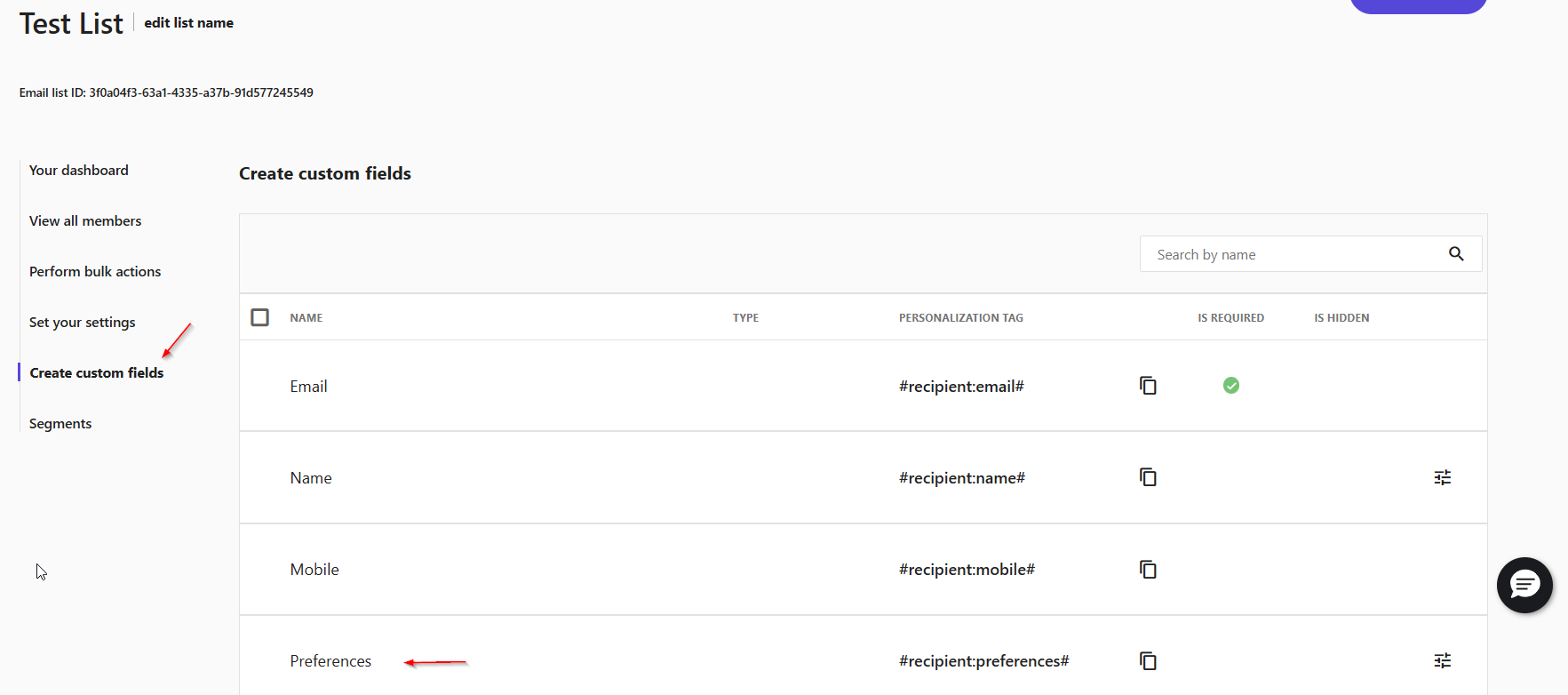
After that, you can simply add your options by clicking on the “Preferences” field and then “Save”:

You can select whether your audience can select single or multiple types of information by toggling the Data Type drop-down and choosing “Single Select” or “Multi Select.” The fields are there for you to add in the options users will be able to tick.
Now, you can set a page that subscribers will reach, to customize their preferences. You can add a landing page or a custom URL through Moosend’s platform by choosing the “Set your settings” and then “Preference page URL” in your email list’s settings.

The page’s URL can be used on your emails as a soft CTA (“Update your preferences here” or “Visit the Preference Center”), your main subscribe page, or a landing page.
Finally, Moosend’s platform creates auto-segments based on user preferences.

So, all you have to do is create a preference center and Moosend will make sure you’ll never have to check out each subscriber’s preferences manually.
What’s Next?
List cleaning isn’t a one-time thing. It needs to be performed regularly to keep your email list free of “bad email addresses.”
The easiest way to nail this necessary process is to establish and follow a consistent email list cleaning schedule for maximal results. Then, you have to find your disengaged subscribers, improve your segments, and try to re-engage your audience.
You can do all of the above through your email marketing software. Moosend’s platform is equipped with the right tools to help you succeed.
FAQs
Want some quick answers to the most common questions regarding email list cleaning? We got you covered.
1. How do I keep my email list clean?
You can use an email verifier and follow tactics, such as building a double opt-in process, adding unsubscribe buttons on emails, and enhancing your segmentation and automation efforts.
2. How often should I clean my email lists?
You can conduct email list cleaning every two months or choose the best frequency based on email metrics, such as bounce rates and spam complaints.
3. What are the best practices for email list cleaning?
Best practices include: 1) A double opt-in process, 2) Unsubscribe buttons, 3) Better segmentation criteria, 4) Dedicated automation workflows, and 5) Email list cleaning services.
4. What are the best email list cleaning services?
Our top recommendations are: 1) EmailListVerify, 2) Neverbounce, 3) ZeroBounce, 4) QuickEmailVerification, 5) VerifyBee and. 6) Email List Validation.
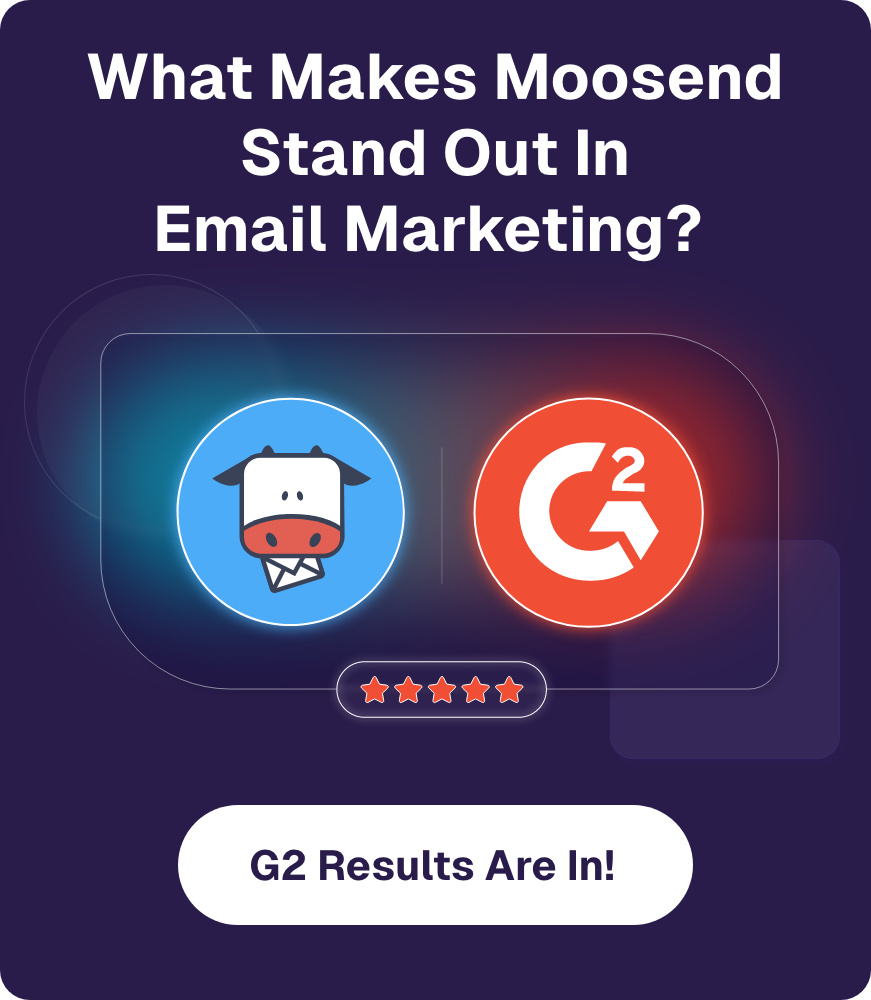


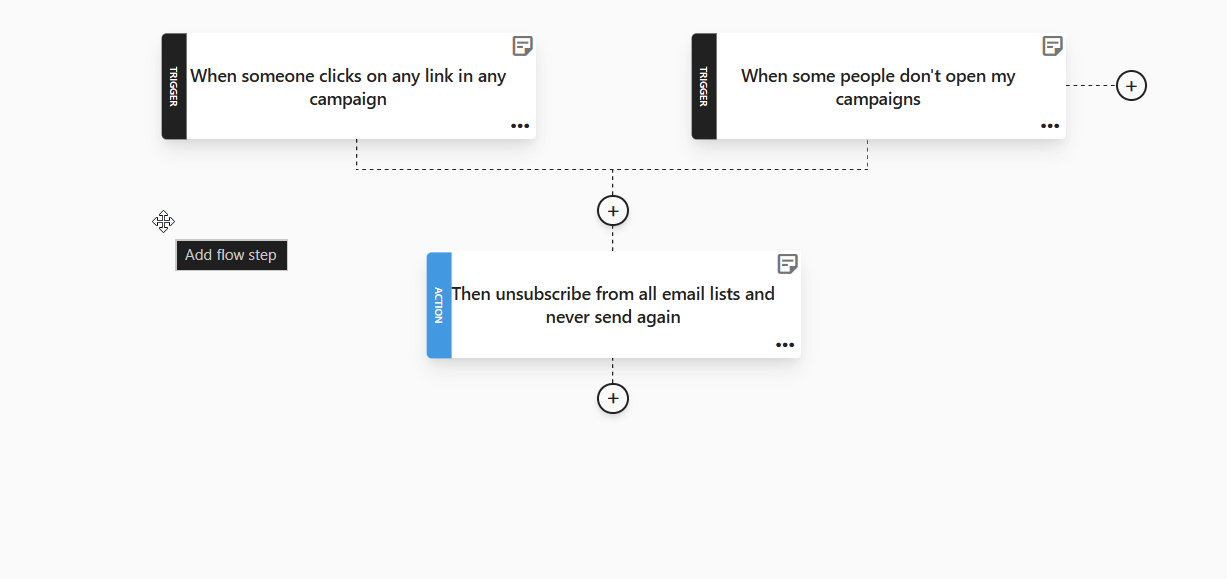

 Published by
Published by
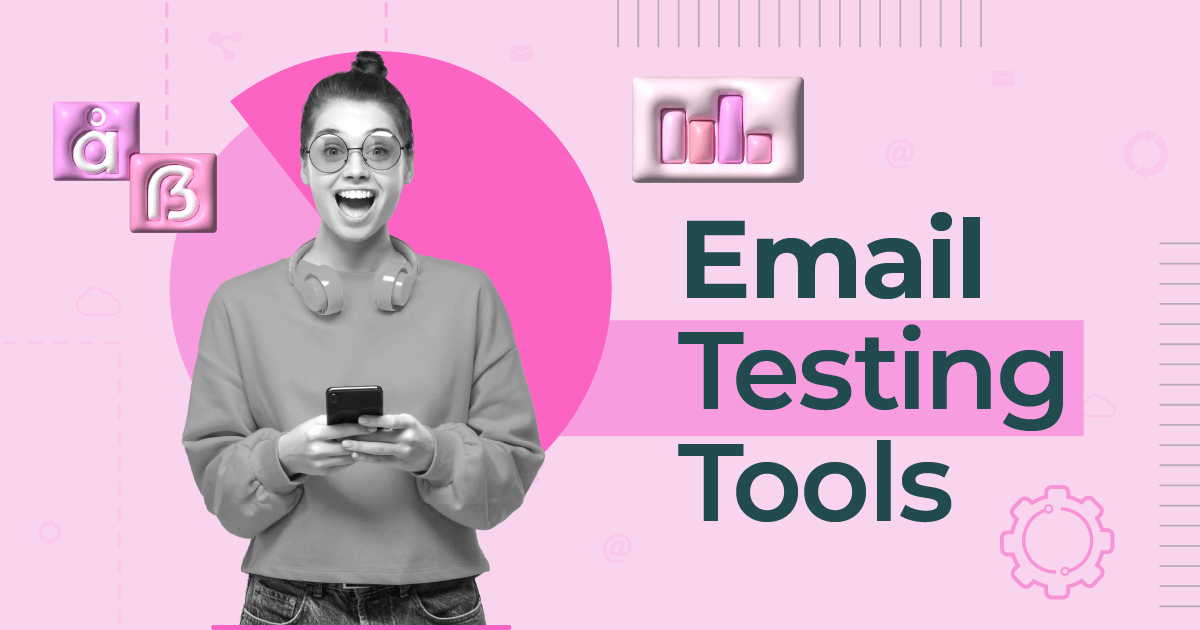

 Published by
Published by